Indigeneity, Heritage and Vernacular Histories
Associate Professor Chris Ballard (Australian National University)
5 September 2019
History is a fundamental resource which living communities continue to draw on to position themselves in the contemporary world and to imagine and plan for their futures. The central goal of this master class is to build the confidence to work with, understand and write about Indigenous or vernacular forms of heritage and history, in Indonesia and beyond. This is a very useful skill for graduate students in anthropology, history, linguistics, and any other discipline that involves reconstructing either recent or deep pasts with local communities. By vernacular history, we mean any history which does not form part of an official or scholarly account of the past. This can include oral history, family or communal history, genealogy, or tangible and intangible forms of cultural heritage, along with other ways of representing the past, such as song, dance, art, and other daily practices.
The workshop will introduce you to the concept of vernacular history, and to some of the relevant methods and tools of research. We will look at how local communities express their histories, and how these histories reflect different notions of time and temporality. We will use case studies from both Austronesian and Papuan communities in eastern Indonesia, Papua Province, Papua New Guinea and Vanuatu, to explore field research methods and strategies, and to understand the role of archival materials (word lists, photographs, artefacts etc.) in prompting and eliciting vernacular histories. These same case studies will also provide us with a sense of the complexity, as well as the enormous richness of vernacular histories in our region, and will hopefully inspire you to conduct this form of research.
The following readings will help to prepare you for the class:
Wellfelt, Emilie 2016. Historyscapes in Alor: Approaching indigenous history in Eastern Indonesia. Doctoral dissertation, Linnaeus University. [Extracts]
Gammage, Bill 1981. ‘Oral and written sources.’ In Donald Denoon and Roderic Lacey (eds) Oral Traditions in Melanesia. Port Moresby: UPNG and IPNGS, pp.115-122.
Linguistic Typology and Austronesian Morphosyntax
Associate Professor I Wayan Arka (Australian National University)
Professor Ketut Artawa (Udayana University)
Dr. Sonja Riesberg (University of Cologne)
9-14 September 2019
Description
This course is an introduction to the fundamental concepts of (morpho)syntax in linguistics and linguistic typology — the study of worldwide distribution of linguistic diversity by investigating the patterns in languages’ similarities and differences. We will discuss the rich variety of syntactic structures found in the Austronesian world. Austronesian is the world’s largest language family in terms of geographical spread, spanning more than half the globe: from Madagascar to Easter Island, and from Taiwan to New Zealand. This vast and diverse language family is also one of the best documented. It includes both major world languages with millions of speakers, like Indonesian and Tagalog, and tiny Oceanic languages spoken on a remote island with only a couple of hundred speakers.
During the course you will be exposed to the aims, methods, and research results of typology within the domains of (morpho-)syntax. The course will also offer glimpses of recent developments in how linguistic typology interacts with other types of linguistic pursuits, such as descriptive and documentary linguistics, historical linguistics and theoretical linguistics.
The sessions will be organised around comparative-typological themes, providing the foundation for analysis of the similarities and differences among different subgroups of Austronesian languages. Upon successful completion of this course, you should be familiar with the salient typological profiles of the Austronesian languages, and you should be able to do typological research on relevant morphosyntactic topics, including presentation and justification of your analyses and results.
This course is of international standard, and can be taken for credit. It is an intermediate level course of linguistics, equivalent to the ANU’s 2000-level course (6 units).
Mode of delivery
The course will run intensively for 6 days (9-14 September 2019), 6 hours every day, distributed across morning, midday and late afternoon sessions; see the schedule here.
Learning outcomes
Upon successful completion of this course, students will be able to:
-
- summarise and discuss typological characteristics of Austronesian languages based on their grammatical/structural aspects as reported in the most significant publications that address these issues in current typological contexts;
- apply the concepts, principles and methods of linguistic typology to different data sets from Austronesian languages that exemplify them;
- provide an analysis and solve linguistic-typological problems based on concrete new data;
- undertake guided advanced comparative research and develop an analysis on a selected topic for a given project;
- present and justify the research results of the project and the analysis with clarity and focus both orally and in writing;
- evaluate the suitability of basic grammatical theory for typological projects in Austronesian linguistics;
Prescribed reading
Blust, Robert. 2009. The Austronesian languages. Canberra: Pacific Linguistics.
Preliminary reading
Adelaar, Alexander. 2005. The Austronesian languages of Asia and Madagascar: A historical perspective. In The Austronesian languages of Asia and Madagascar, ed. by Alexander Adelaar and Nikolaus P. Himmelmann, 1-42. London and New York: Routledge.
Himmelmann, Nikolaus P. 2005. The Austronesian languages of Asia and Madagascar: Typological characteristics. In The Austronesian languages of Asia and Madagascar, ed. by Alexander Adelaar and Nikolaus P. Himmelmann, 110-181. London and New York: Routledge
Chapter 1 of Blust, Robert. 2013. The Austronesian Languages (the revised edition). Canberra: Asia-Pacific Linguistics.
Chapter 1 of Moravcsik, Edith. 2013. Introducing Language Typology. Cambridge: Cambridge University Press.
Note: Readings for each topic will be given later.

